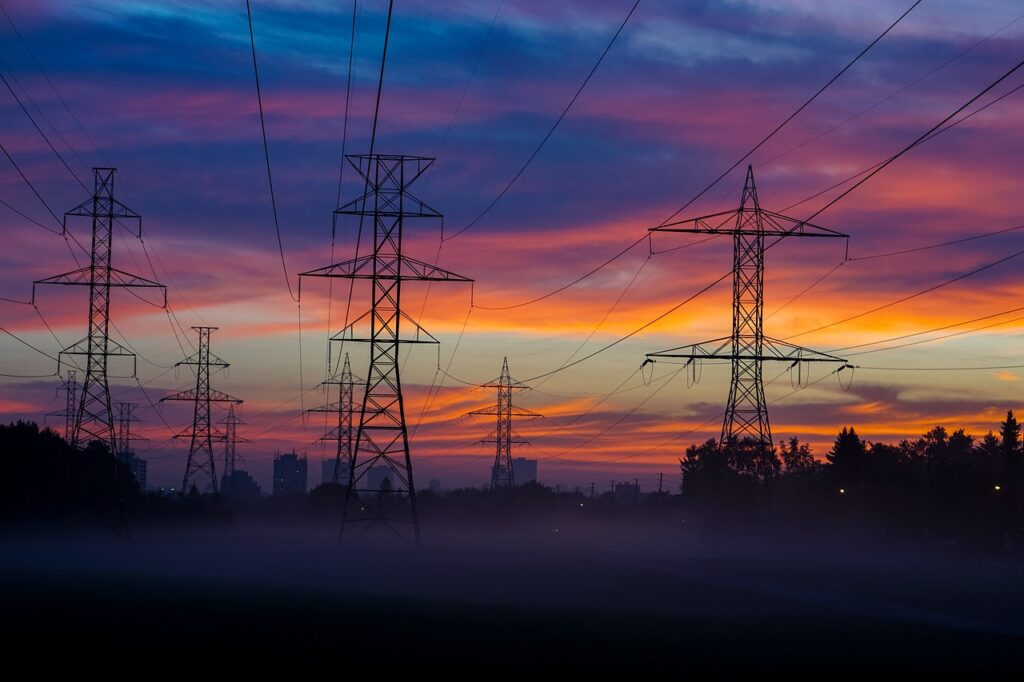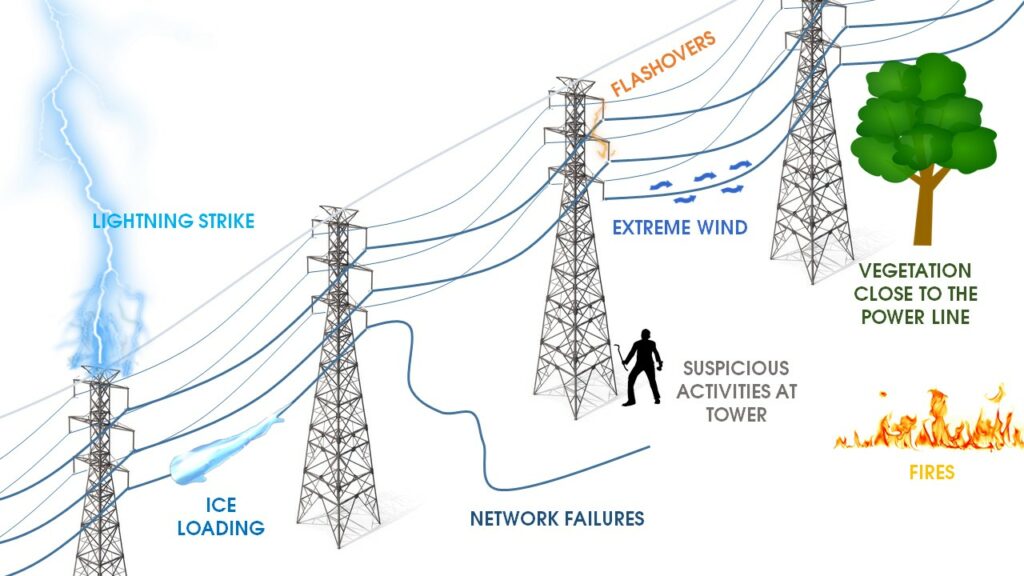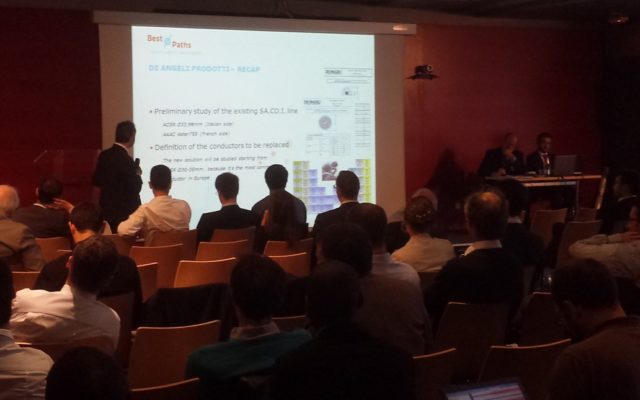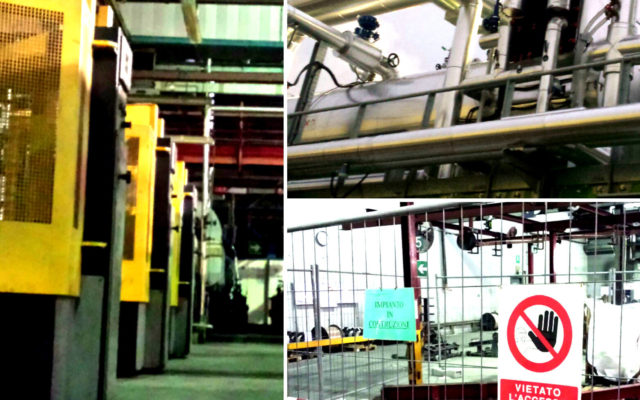Transmission networks are evolving to integrate renewable energy sources and address the challenges of the energy transition. Let’s explore the technologies and opportunities driving this transformation.
Energy transmission networks are undergoing a radical transformation to address the challenges posed by the global energy transition. With the goal of achieving net-zero greenhouse gas emissions by 2050, electrical grids must integrate renewable energy sources (RESs) such as wind and solar power, enhance operational efficiency, and ensure stability in an increasingly complex environment.
Summary:
- 1. The importance of transmission networks
- 2. Today’s and tomorrow’s challenges
- 3. Advanced technologies for grid control
- 4. Industrial practices: previous and successes
- 5. Future opportunities
- 6. How De Angeli Prodotti accelerates the race toward the future
- 7. Conclusion
1. The importance of transmission networks
Transmission networks form the central infrastructure for transferring high-voltage electrical energy from generation points to distribution centers. These systems, essential for ensuring reliable energy supply, rely on key components such as transmission lines, substations, and transformers.
Originally, transmission networks were designed to handle unidirectional energy flows from large power plants to consumption areas. Today, with the introduction of decentralized RESs, this paradigm has shifted, necessitating greater flexibility and adaptability. Network configurations — radial, loop, or meshed — offer varying levels of resilience and efficiency, but all require technological upgrades to meet the challenges of the 21st century.

2. Today’s and tomorrow’s challenges
The increasing integration of renewable energy sources introduces new complexities, including:
- Reduction in system inertia: Inverter-based RESs (IBRs) lack the inertia provided by traditional synchronous generators. This absence reduces the grid’s ability to maintain frequency stability during sudden changes in demand or generation.
- Intermittency of renewable sources: Wind and solar energy are inherently variable, requiring solutions to quickly balance supply and demand during unfavorable conditions.
- Resilience to external threats: Extreme weather events, technical failures, and cyberattacks can compromise grid stability. Advanced prevention and rapid recovery strategies are essential to minimize risks.
- System interoperability: Integrating devices and systems from different providers requires common standards to ensure seamless communication and efficient operation. A lack of interoperability can lead to operational inefficiencies and high costs, particularly in cases of failure and/or recovery.
3. Advanced technologies for grid control
Modern transmission networks rely on advanced technologies to enhance efficiency, reliability, and stability. Key innovations include:
- Phasor Measurement Units (PMU): PMUs are critical devices for real-time monitoring of grid conditions. They provide synchronized measurements of voltages and currents, enabling operators to quickly identify stress, instability, and congestion. These units enhance situational awareness and support informed decision-making.
- Advanced Automation Systems: Automatic Generation Control (AGC) systems regulate energy production to maintain grid frequency stability. These systems are often integrated with platforms like SCADA (Supervisory Control and Data Acquisition) and WAMPAC (Wide-Area Monitoring, Protection, and Control), providing a holistic view of grid operations.
- Advanced Modeling: Accurate modeling of grid behavior is essential for the design and operation of control systems. Small-signal modeling techniques analyze short-term dynamics, while large-signal modeling simulates behavior during major disturbances, such as a blackout.
- Energy Storage Systems (ESS): ESS, such as lithium batteries, pumped hydro storage, and flywheels, are crucial for compensating the variability of RESs. They provide stability, enhance energy quality, and offer backup during emergencies.
4. Industrial practices: previous and successes
Globally, many nations and companies are implementing innovative strategies and technologies to address the challenges of modernizing transmission networks. The following examples highlight not only the central role of advanced technologies but also the critical importance of international collaborations.
4.1 HVDC technology (High Voltage Direct Current)
HVDC technology has become a key solution for enhancing the capacity and efficiency of transmission networks while reducing operational losses, especially in large-scale projects.
- Dogger Bank Wind Farm (United Kingdom): This project represents the largest offshore wind farm in the world. The use of HVDC technology enables the conversion of generated energy into direct current, reducing losses during electricity transfer to the mainland. With a total capacity of 3.6 GW, the project will serve millions of homes, demonstrating the effectiveness of HVDC in integrating renewable energy.
- Québec-New York Interconnection: The collaboration between Canada and the United States leverages HVDC technology to transfer clean hydroelectric power over long distances, addressing congestion issues in traditional AC grids.
- Continental Europe: In Germany and the Netherlands, projects have been launched to connect offshore RES to continental grids using HVDC platforms, which reduce environmental impact and improve transmission efficiency.
4.2 Implementation of PMU and WAMPAC
The adoption of Phasor Measurement Units (PMU) and Wide-Area Monitoring, Protection, and Control (WAMPAC) systems represents a significant innovation in grid management. These technologies enhance resilience and predictive capabilities, increasing stability in the presence of intermittent RES.
- Greece: The installation of PMUs in strategic locations has improved real-time grid monitoring, facilitating the integration of renewable energy sources. These devices enable rapid detection of disturbances and the implementation of corrective measures before blackouts occur.
- Iceland: The use of WAMPAC has enabled the implementation of location-sensitive control to reduce grid separation events during disturbances. This is crucial in an isolated system vulnerable to load and generation fluctuations.
4.3 Energy Storage Systems (ESS)
ESS enable dynamic energy management by storing electricity during periods of overproduction and releasing it when needed, helping to stabilize the grid.
- United States: Xcel Energy is developing 600 MW of battery storage capacity by 2030 to address the increasing variability of RESs. This capacity will help balance supply and demand during production and consumption peaks.
- Australia: The upgrade of the Victoria-New South Wales line has integrated advanced ESS with FACTS (Flexible AC Transmission Systems) devices to increase transmission capacity and reduce congestion.
4.4 Dynamic grid management
Dynamic management and digitalization have been adopted to optimize the operational capacity of existing grids.
- Germany: German operators are investing €1.9 billion to upgrade existing infrastructure by integrating technologies such as power flow control and dynamic line management. These investments enhance the grid’s capacity to accommodate an increasing share of renewable energy.
- Texas (United States): The region’s Independent System Operator (ISO) utilizes ancillary services to balance supply and demand in real time, reducing the risk of blackouts. Operational flexibility is crucial for managing the variability of renewable generation.
4.5 Other examples of international collaborations
Transnational cooperation plays a crucial role in the development of modern transmission networks.
- France and Spain: Transmission system operators have collaborated to implement unified management of cross-border HVDC lines, reducing frequency oscillations between the grids.
- Nordic Countries: The Nordic countries are developing a common framework to improve generation adequacy, frequency quality, and RES integration, addressing operational challenges associated with increasing variability.
5. Future opportunities
The modernization of grids presents numerous opportunities, including:
- Technological Innovations: The adoption of emerging technologies, such as advanced sensors, dynamic line management, and topological optimization, promises to enhance grid capacity, efficiency, and reliability. Additionally, advancements in energy storage with next-generation batteries will facilitate managing the variability of RESs.
- Digitalization: The use of real-time data for grid monitoring and control is essential to ensure stability and reliability. Technologies such as 5G, artificial intelligence, and predictive analytics enhance operators’ decision-making capabilities.
- Market Adaptation: The integration of RESs requires new market models to ensure economic and operational sustainability. Creating incentives for adopting advanced technologies and enhancing operational flexibility is essential.
6. How De Angeli Prodotti accelerates the race toward the future
In the context of transforming transmission networks, De Angeli Prodotti accelerates the race toward the future through a series of strategies:
- Innovative Conductors: The use of advanced materials enables us to develop high-efficiency conductors capable of managing energy more effectively while reducing losses. This allows lines to operate at higher temperatures and contributes to a more efficient and reliable grid overall.
- HVDC Technology: High Voltage Direct Current lines require large amounts of renewable energy to be transmitted over long distances with minimal losses. To support this technology, we design HTLS conductors specifically tailored for such applications.
- Digitalization and Advanced Monitoring: Our smart conductors support the development of digitalized electrical grids through integrated sensors within the conductor, capable of detecting temperature, strain, defects, damages, and vibrations along the entire line. Additionally, we design and manufacture components and solutions incorporating PMUs (Phasor Measurement Units) to monitor grid conditions in real time, enhancing reliability and preventing failures.

- Environmental Sustainability: All our innovation would be on shaky ground without relying on low-impact materials and production processes. Additionally, our conductors optimize existing grids, facilitating the integration of renewable energy sources. The reduction in transmission losses further enhances the sustainability of the entire grid.
- International Collaborations: Our company participates in global projects to enhance the capacity and resilience of transmission networks and establishes strategic partnerships to implement innovative solutions.
- Research: Our company continuously seeks solutions to address the challenges of our time, including managing the intermittency of renewable energy sources and enhancing resilience to extreme weather events, which are becoming increasingly frequent due to climate change.
7. Conclusion
Transmission networks are undergoing a critical transformation driven by the need to integrate RESs, ensure stability, and improve operational efficiency. Advanced technologies, such as real-time monitoring, energy storage systems, and automated control platforms, play a key role in supporting this transition.
The evolution of networks is not only about adopting cutting-edge technologies but also requires a cultural and institutional shift. Collaboration between industries, governments, and university research centers is essential to address technical and regulatory challenges and to build a more sustainable, resilient, and efficient energy future.
At De Angeli Prodotti, we are proud to contribute to the growth of transmission networks with the technological innovation of our ACCM (Aluminum Conductor Composite Multistrand) and Smart Conductors. These advancements make us a leading partner in the energy transition, offering solutions that meet the technical demands of modern grids while promoting a sustainable and intelligent approach to energy transmission.


